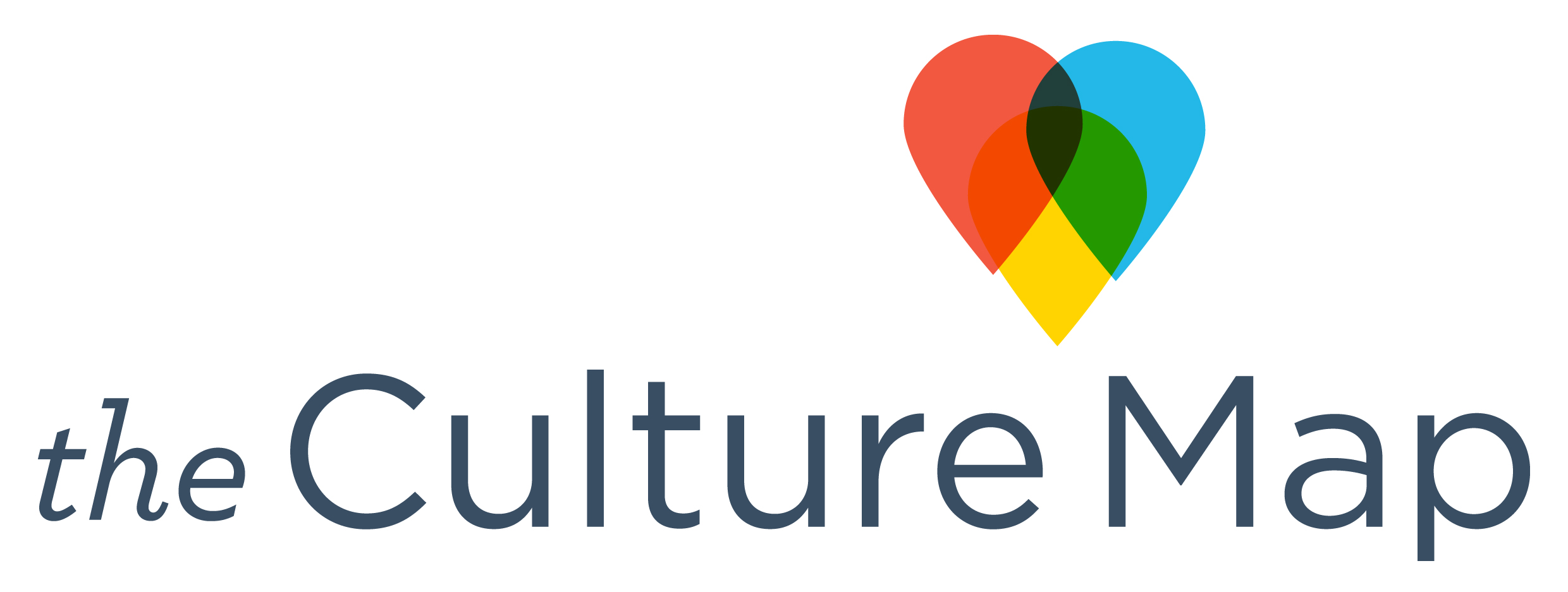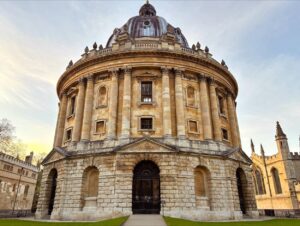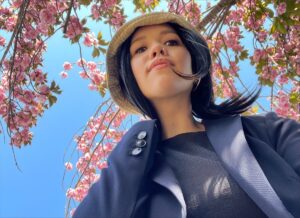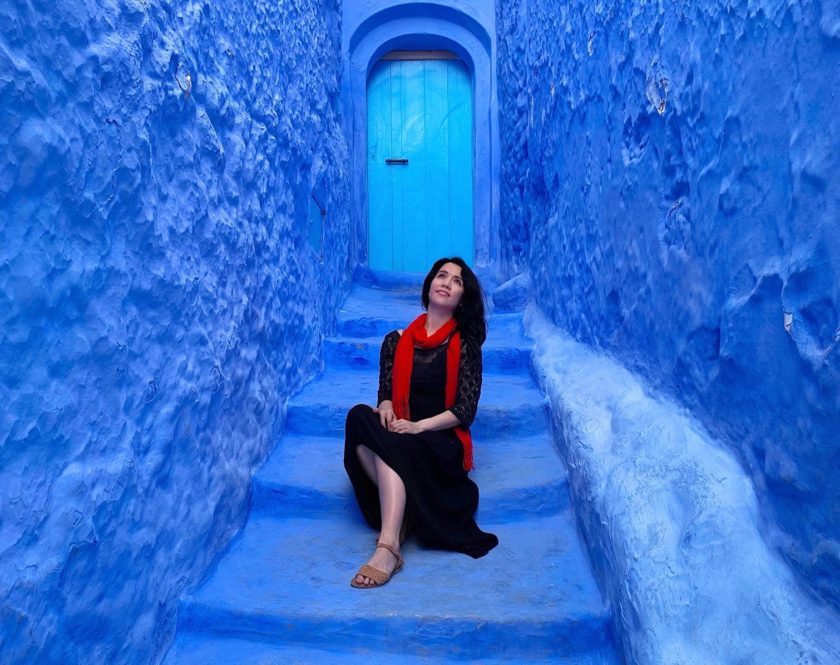
Beautifully nestled among the Rif Mountains in northwest Morocco, Chefchaouen possesses a dream-like appearance that is only usually reserved for the pages of a fantasy children’s book.
Affectionally described as the ‘Blue Pearl of Morocco’, a title wholly worthy of its name, where every corner and crevice of the city is painted in brilliant shades of blue.
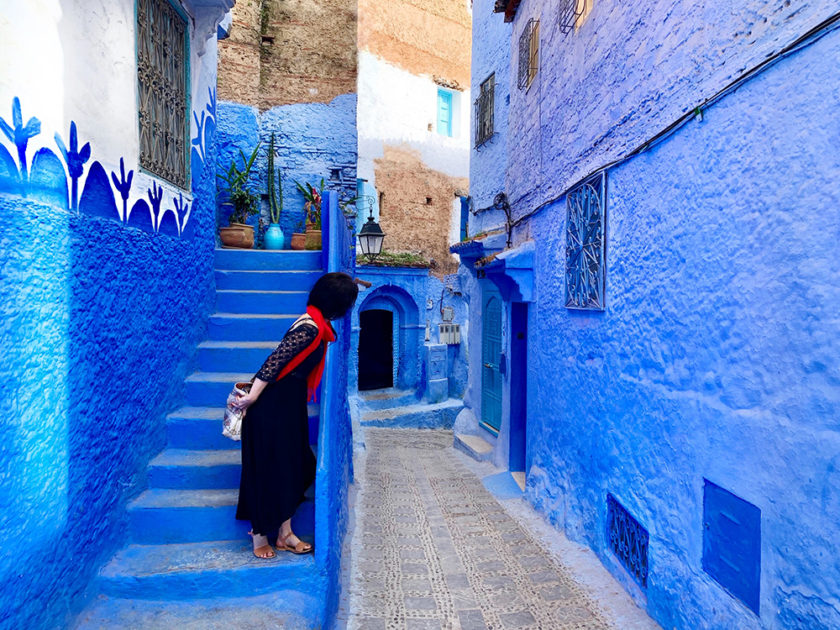
Is the whole city really painted blue?
Social media and travel magazines have a way of only showing you the best bits so sometimes expectations don’t always meet reality. I wondered if Chefchaouen would be another tourist trap destined for the same fate. Instead of finding a city laid out entirely in hues of blue, would it in fact just be one or two streets?
As I approached the city by bus from Fez, it didn’t look so blue from a distance and my heart sank a little. Could my fears be true? Maybe I had been wickedly deceived by social media influencers and eager tourist boards after all?
However, it turns out that the buildings seen from a distance also make up the new part of the city which doesn’t really adhere to the famous colour scheme. So as you approach Chefchaouen it doesn’t have the wow factor you might expect.
Soon enough, any disappointment I had disappeared once I stepped off the bus and made my way towards the medina as more and more buildings painted blue came into view.
Fully within the old city walls I was completely enclosed by every single shade imaginable – sapphire, teal, turquoise, ultramarine, indigo, sky and cobalt blue covered whole buildings, medina walls and even many floors at every twist and turn. Chefchaouen didn’t just meet my expectations, it exceeded them.
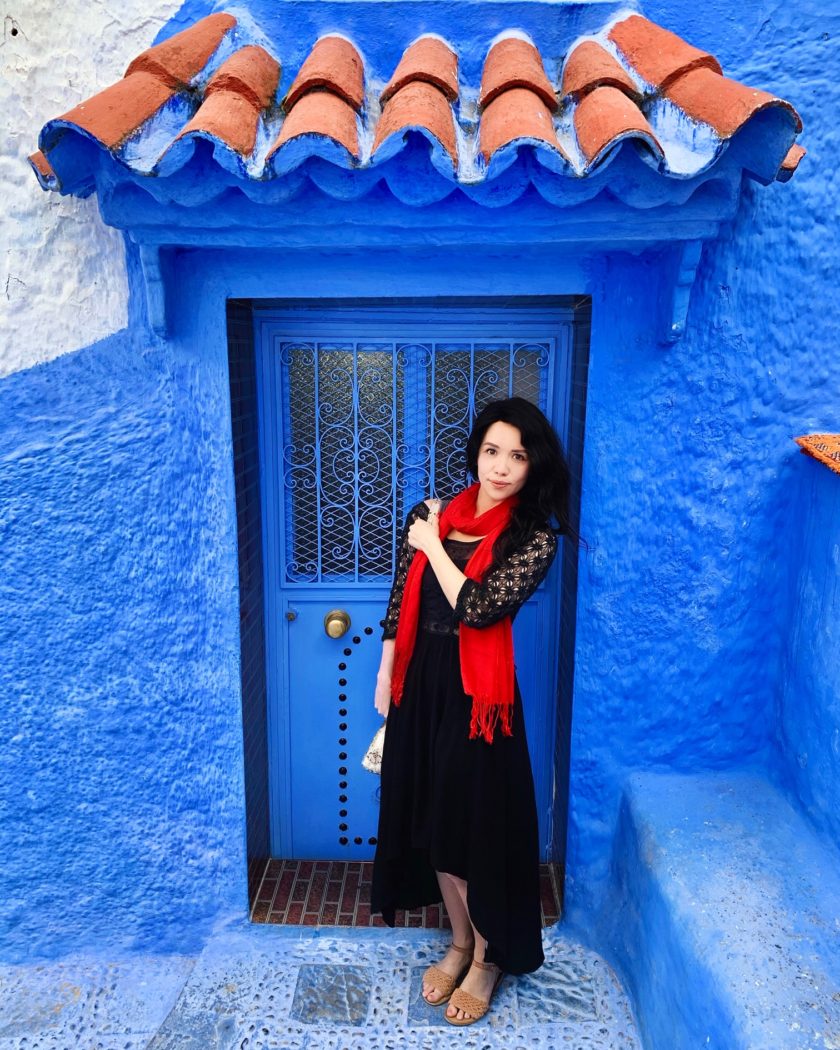
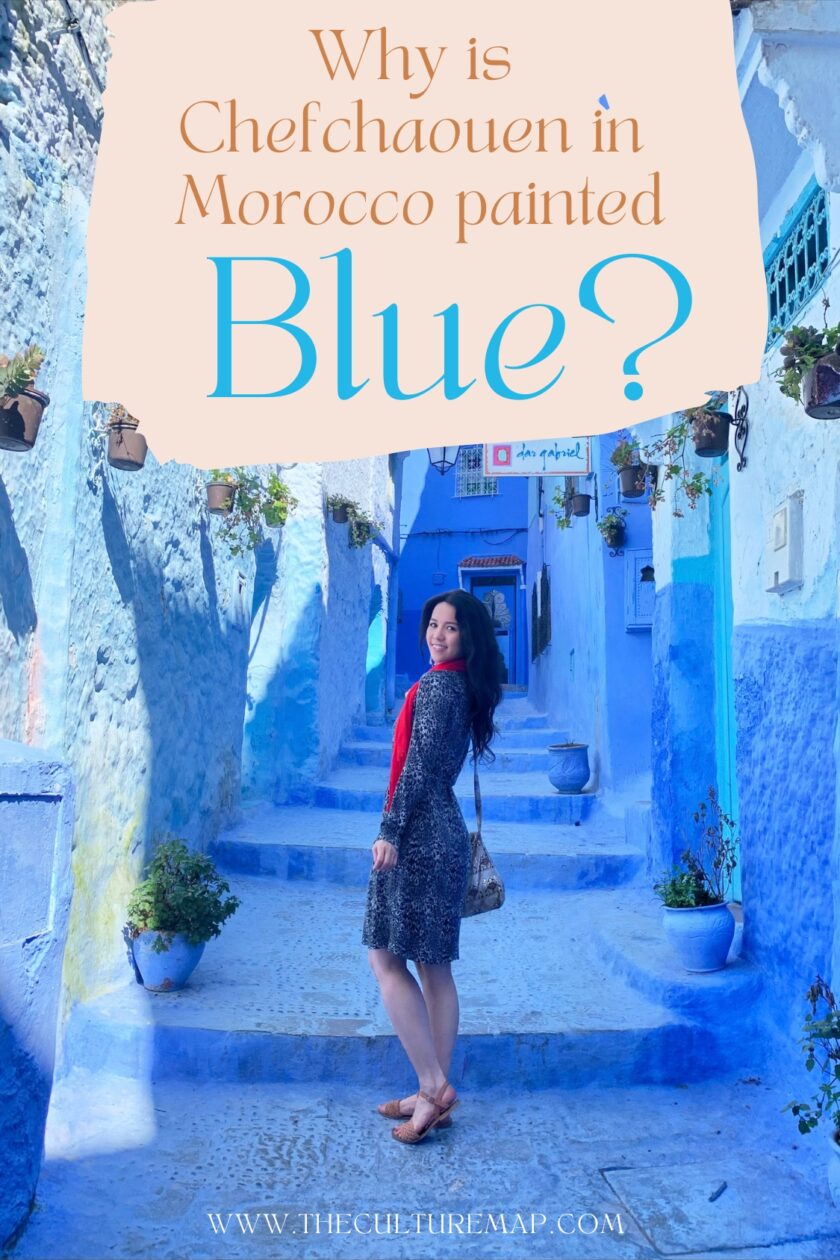
But why is Chefchaouen painted blue?
Like many things from the past, nobody knows for certain why it is the way it is and Chefchaouen is no exception. Truth be told, nobody can say with proof why the Old Town is painted entirely blue, but there are several theories:
Sephardi Jewish culture
One view is that the Sephardi Jews who emigrated to Morocco from Spain during the Spanish inquisition to avoid persecution for not converting to Catholicism brought with them a tradition of painting buildings and objects blue. The colour blue is representative of the sky according to Jewish belief so painting houses became a tradition because it reminded them of the sky and the feeling of closeness to God.
Mosquito repellant
Another belief is that the liberal use of blue paint is in effort to repel mosquitoes and prevent malaria. Their reasoning is that these pesky insects do not like being in the water (despite breeding and living near water). So with hundreds of walls painted blue, many of which resembling flowing water, people believe that this aspect keeps away the mosquitoes.
It is certainly possible that Muslims saw fewer mosquitoes in the Jewish part of the town, and decided over time to follow suit.
Aesthetics and soothing effect
While beauty is subjective, most of us can agree that the colour blue is enjoyed by most. Could it be that a few homes close to the mellah liked the colour originally painted by Jewish settlers and decided to copy it? After all, in Islamic culture blue has its own different associations, said to be a colour of happiness and optimism.
Furthermore, something which interested me whilst walking around the medina, was how calm and peaceful the atmosphere felt. I’ve read a few articles about the therapeutic benefits of blue, and scientists have experimented with the colour in relation to calming effects on our emotions.
I should add that I visited in February so there weren’t many tourists, but even so, the whole mood of Chefchaouen is much more relaxing than Marrakech and Fes. But then again, I think everywhere is more relaxing than Marrakech!
Tourism
Lastly, there are others who say it’s purely for tourism. But while tourism might play a factor in adhering to the tradition (it’s definitely a draw for travellers which no doubt is important for the local economy), it doesn’t provide a reason why it began in the first place since major tourism only began in the last few decades.
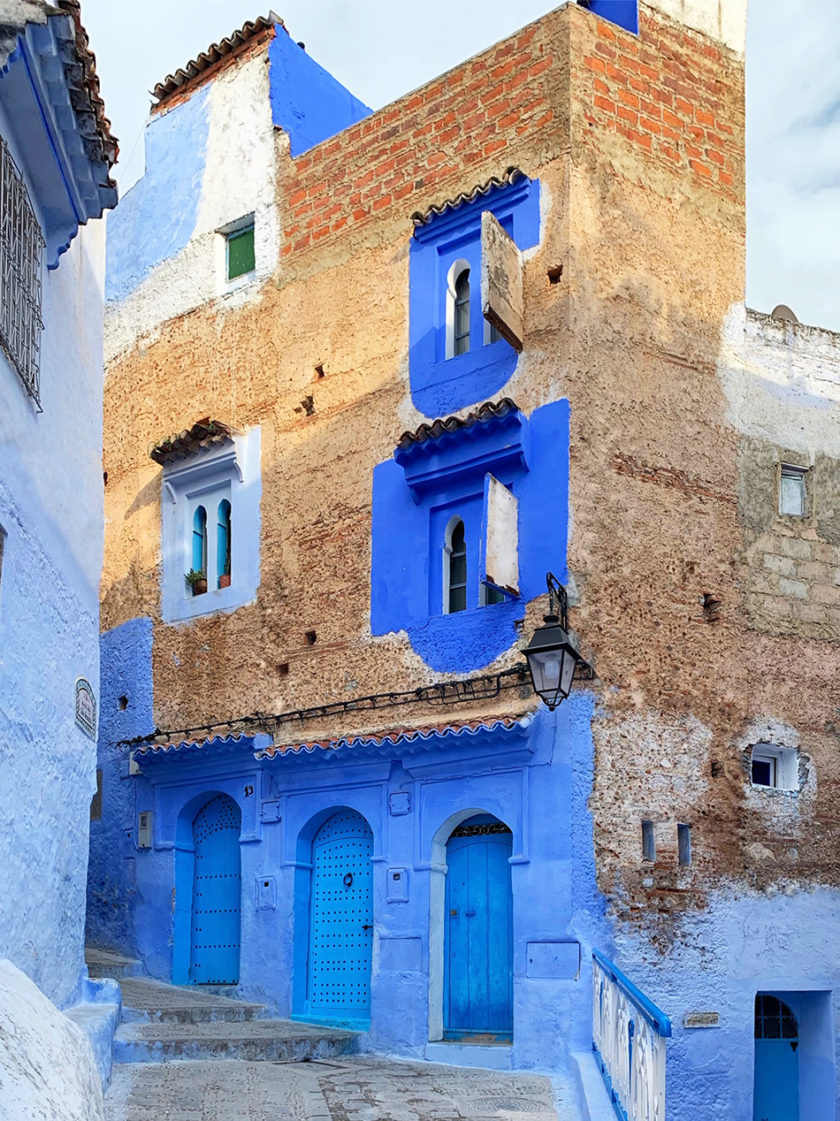
My thoughts
I’m inclined to believe there’s an element of truth to all of the reasons. Perhaps the tradition began when the Sephardi Jews emigrated to the area, and the Muslims adopted it purely for their appreciation of the colour blue from an aesthetic point of view and for its notable calming properties. And now it’s just what everyone does here, reflecting the idea that communities in Morocco like to show a united front.
All I really know is Chefchaouen is uniquely bluetiful, sorry, I mean, beautiful!
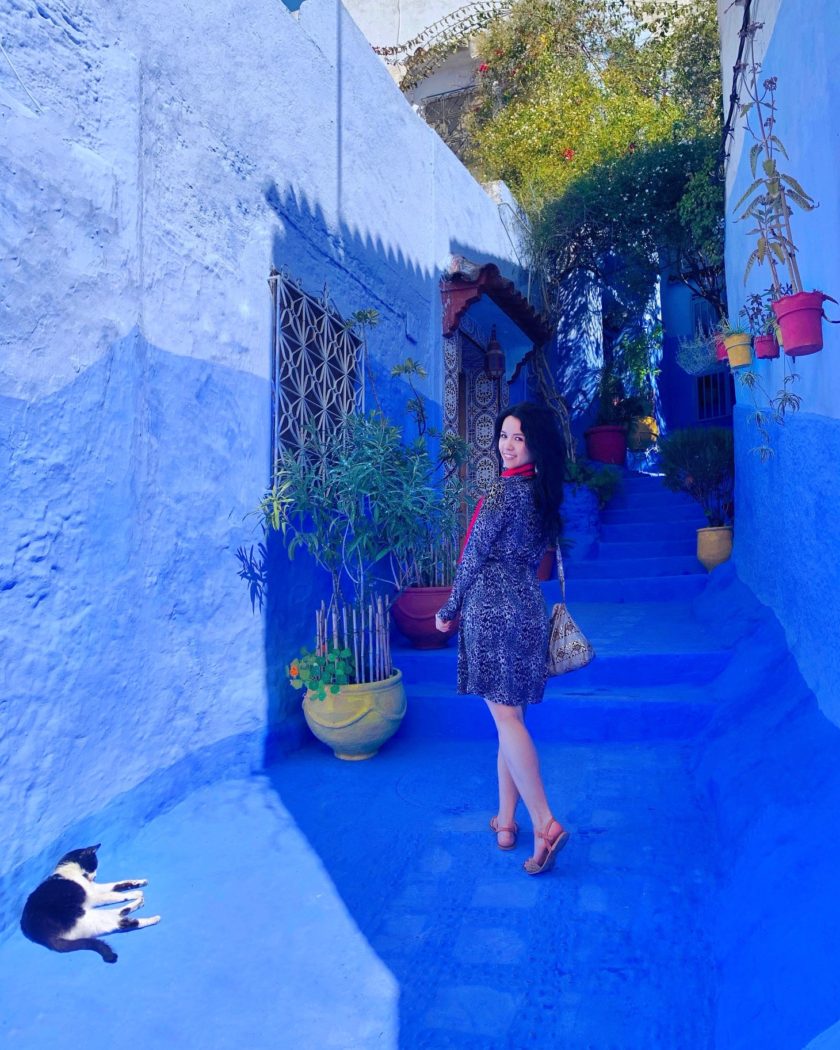
Where to stay in Chefchaouen
After reading so many glowing reviews of Casa Perlerta, I didn’t hesitate to make a booking and I could not have wished for a better experience.
It’s often said good things come in small packages, and this is certainly true for Casa Perla. Despite an endless supply of charm, this boutique hotel is surprisingly affordable, a winning combination that has resulted in it being considered by many as the no.1 place to stay in Chefchaouen. However, with only 10 rooms available, only a few people who visit the city can actually stay here so make sure you don’t miss the chance by booking in advance.
You can read more about my dreamy stay in this dedicated blog post:
Casa Perleta: The Most Charming Hotel In Chefchaouen, Morocco
